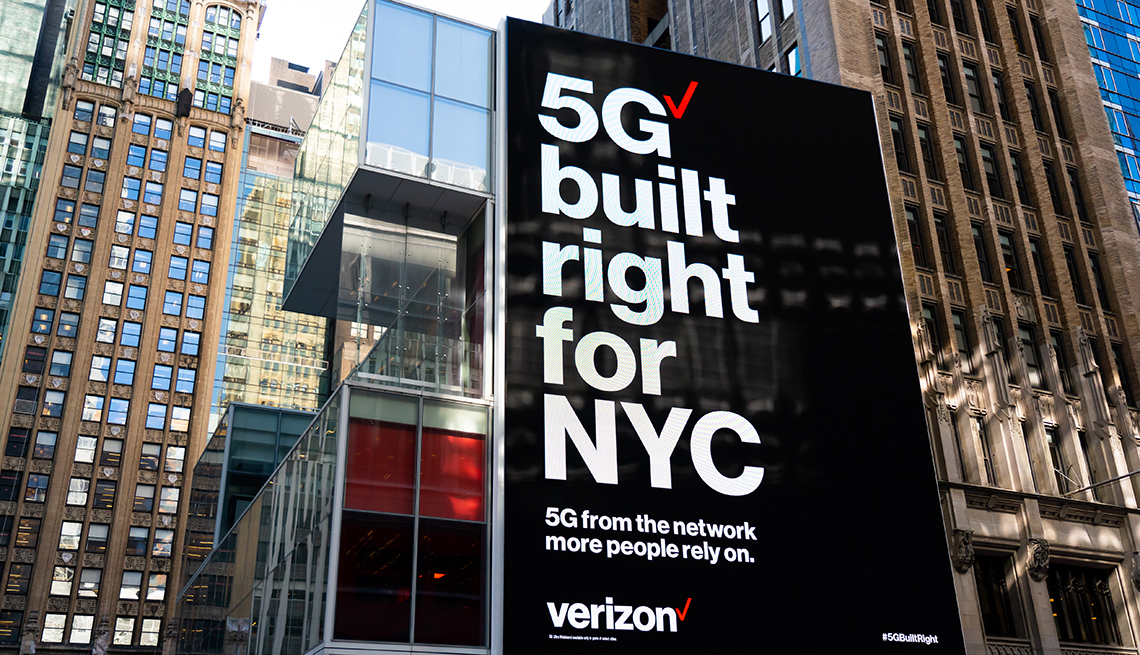
What is 5g? Here's everything you need to know
- Select a language for the TTS:
- UK English Female
- UK English Male
- US English Female
- US English Male
- Australian Female
- Australian Male
- Language selected: (auto detect) - EN
Play all audios:
Who wouldn't want a zippier connection to the internet, whether stuck at home during the pandemic or having started to venture out again? For tech-savvy folks, that speedy connection
may come through 5G, the industry label applied to the souped-up next generation of wireless. AT&T, Verizon and T-Mobile/Sprint, as well as their counterparts overseas, have spent tens
of billions of dollars and several years building out their respective 5G networks and have already begun deploying 5G around the world. Consumers also may get superfast connections through
gigabit internet solutions for home use, provided not through traditional copper wires but through fiber-optic lines. 5G is shorthand for fifth generation, and it promises cellphone speeds
as much as 100 times faster than the norm today, 4G LTE. Gigabit internet (so named because data are transmitted at up to 1 gigabit or 1,000 megabits per second) also promises that kind of
speed — about double that of the fastest cable internet. Where 5G is a wireless solution, gigabit internet requires an ethernet cable that runs to a modem, which connects your home to the
internet, and then to a router, which allows all your devices to use the internet simultaneously and to talk to one another. Both technologies allow you to download a full-length movie onto
a device in seconds, rather than in many minutes. Or you can stream video, play a game or get on a video chat with no discernable latency or lag time. THE DREAMS FOR 5G WIRELESS GIG INTERNET
VS. 5G CELL SERVICE While both technologies promise faster download and upload speeds than you've ever experienced, they are different animals. • GIGABIT-SPEED INTERNET transmits its
data as pulses of light through thin strands of glass bundled into fiber-optic cables, though approaches to and into the home vary. Cables have to be threaded through neighborhoods to each
home, often on telephone poles, just like coaxial cable for cable-TV service was installed in the 1970s and 1980s. The 1-gigabit-per-second speeds can slow inside older houses that connect
to the fiber-optic cable through copper wires. • 5G CELLULAR NETWORKS are more mobile, using radio waves to transmit data. High-frequency 5G can have the same speed for downloads as
gig-speed fiber-optic service. Potential 5G drawbacks are a need for many cell towers because the high-band waves have a shorter range and those radio waves have problems passing through
walls and windows to get inside a building. 5G isn't just about lightning-fast smartphones. The longer-term ideal will affect everything from self-driving cars to robots for remote
surgery. That includes every internet-connected appliance or gadget that helps you age in place: from camera doorbells that let you monitor package deliveries to smart refrigerators that
alert you when you're running low on milk to Wi-Fi-enabled thermostats that learn your schedule. In some more rural areas, 5G may become a fixed wireless, in-home broadband alternative
to gigabit internet. Fixed wireless service connects one location to the internet via a stationary antenna, so an internet provider doesn't need to run a more expensive fiber-optic
line. But in many places, the 5G and gig internet technologies are more likely to be complementary than competitive. Are these viable options for older adults? Yes, but with caveats. The
hype around 5G has raced past reality. These are early days in the rollout, and several questions around coverage, devices and pricing remain. "5G is an evolving technical mess that
isn't helped by sometimes-confusing carrier marketing efforts,” says Avi Greengart, president and lead analyst of Techsponential, a technology research and advisory firm in northern New
Jersey.